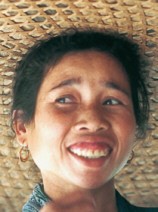Siang in Indonesia

Photo Source:
Copyrighted © 2026
Anonymous All rights reserved. Used with permission |
Send Joshua Project a map of this people group.
|
| People Name: | Siang |
| Country: | Indonesia |
| 10/40 Window: | Yes |
| Population: | 20,000 |
| World Population: | 20,000 |
| Primary Language: | Siang |
| Primary Religion: | Ethnic Religions |
| Christian Adherents: | 5.00 % |
| Evangelicals: | 0.20 % |
| Scripture: | New Testament |
| Ministry Resources: | Yes |
| Jesus Film: | Yes |
| Audio Recordings: | Yes |
| People Cluster: | Barito of Kalimantan |
| Affinity Bloc: | Malay Peoples |
| Progress Level: |
|
Introduction / History
The Siang people live in the province of Central Kalimantan. They are often called the Siang-Murung people because of the close relationship between the Siang and Murung peoples. The Siang primarily live in the Tanah Siang, Permata Intan, Laung Tuhup, Sumber Barito, and Murung districts of the North Barito Regency.The Siang are one of the people groups in the Barito cluster, which is part of the larger Dayak ethno-linguistic cluster. Dayak peoples (sometimes identified as either Land or Sea Dayaks) tend to live alongside the interior rivers of Kalimantan.Their language is called Siang, which is part of the Ot Danum language cluster. The Siang language is considered a "more polite" language than the Murung language. The Siang are particularly proud of their songs honoring respected guests or praising those who have done extraordinary feats.
What Are Their Lives Like?
The main means of livelihood of the Siang people is farming. Other than that, they tap rubber trees, gather forest products such as rattan, hunt pigs, and pan for gold and diamonds. They still use simple tools such as spears, blowpipes, and trident harpoons. The Siang people's mobility is low. Despite this, the Siang people group is not a closed group. They are known as a friendly and open people, but of course any newcomer would have to adapt himself to their customs and traditions. The custom of helping one another is dominant in their communities. For example, during planting and harvest time, neighbors come to help, bringing their own tools, while the owner of the field provides the food and drink. This type of helping one another is called haweh. Nango is helping spontaneously without an invitation, and ndohop is giving aid to one who is unable to proceed with the requirements for a marriage ceremony. The ancestral line is characterized as ambilineal. Extended families are formed by the groom living with the bride's family. Social interaction is clearly defined. Their customs and manners are carefully defined, in matters concerning parents-in-law relations to their children-in-law. Another example is that a brother-in-law is not allowed to enter the house of his sister-in-law if her husband is not home.
What Are Their Beliefs?
The Siang people follow an ancestral belief system called Kaharingan. They believe invisible creatures and spirits of the deceased inhabit the natural world around them. These spirits at times enter the visible world which is called Lewu Liau. When someone dies, they are temporarily buried, then later a special observance called numbeng is held to send the spirit to the spirit world to face the highest god/spirit called Ranying Mahatalla Langit.
What Are Their Needs?
There are needs for improvement in the basic infrastructure to facilitate communication with surrounding areas. This will serve to improve the marketing of agricultural products as well as to expand their horizons. They need to be taught how to use modern tools to maximize productivity. The wealth of mineral reserves, gold deposits, and other precious stones in the regions where the Siang live needs professional and wise development so that the welfare of these people will improve.
Prayer Points
Pray for the Lord to thrust out workers to the Siang people.
Pray for Siang disciples to make more disciples.
Pray for them to seek and find the loving and sovereign Lord of lords.